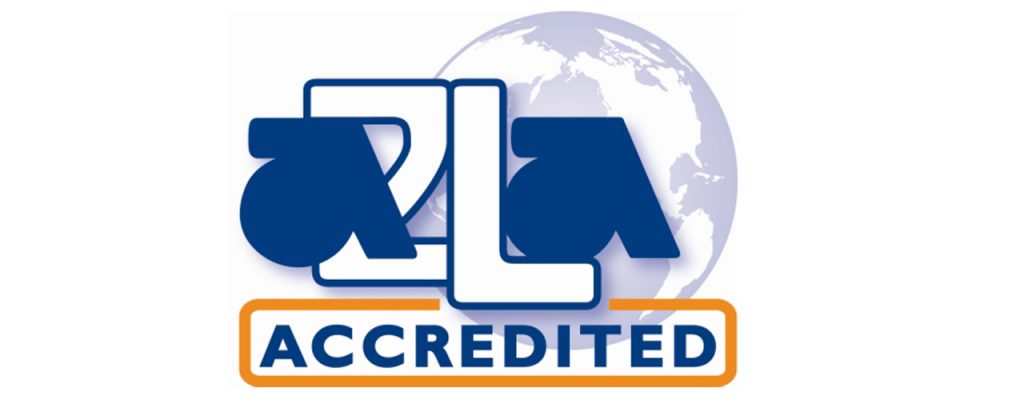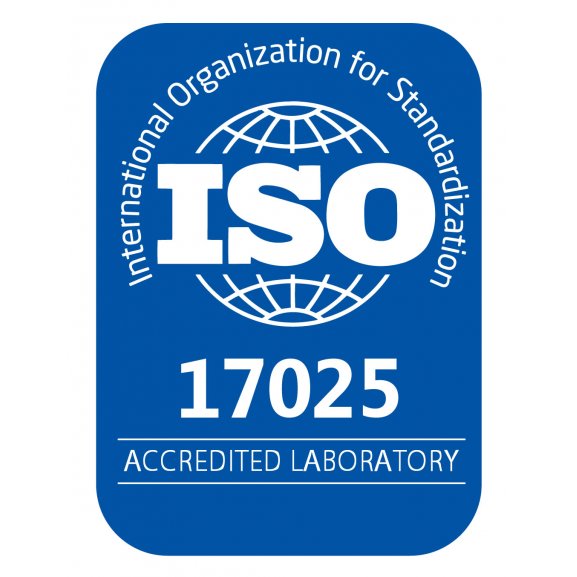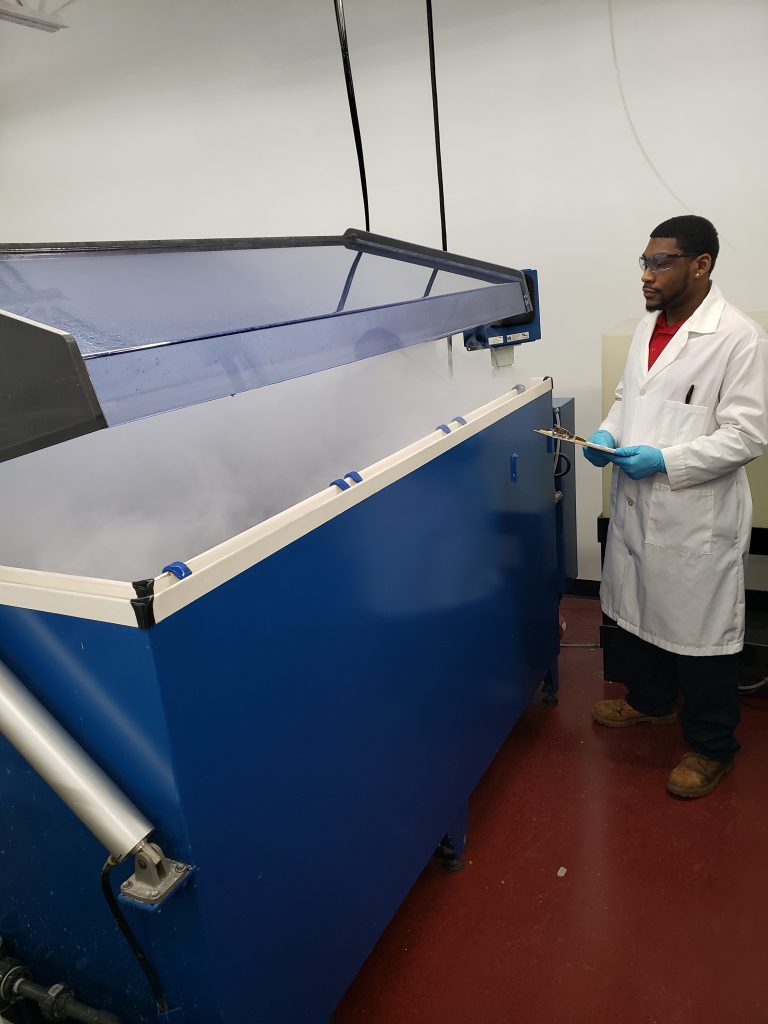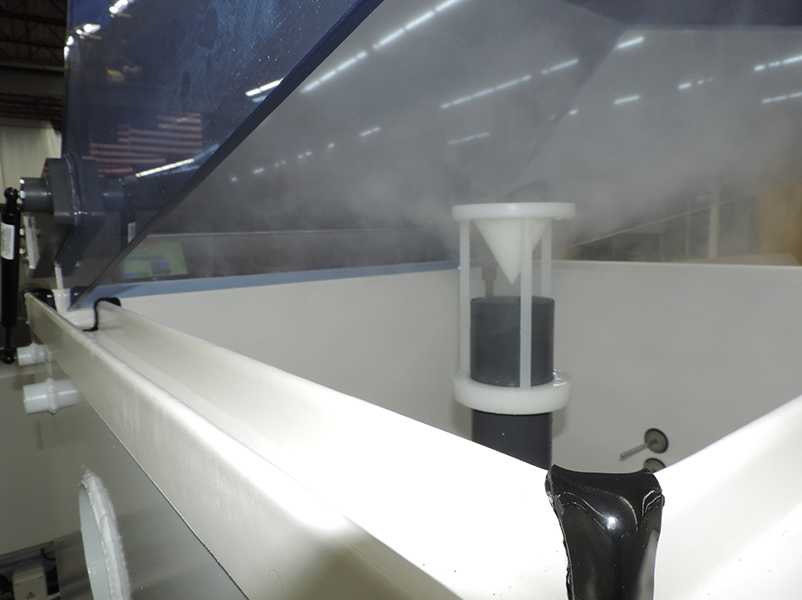Another standard that is practiced here at ATC is ASTM G85 which is a modification to the ASTM B117 salt spray. This standard has five different conditions in salt spray testing which are called annexes (A1-A5). Annex 1 is an acetic acid-salt spray test, Annex 2 is a cyclic acidified salt spray test, Annex 3 is seawater acidified test (SWAAT), Annex 4 is SO2 salt spray test and Annex 5 is a dilute electrolyte cyclic fog dry test. This practice is applicable to ferrous and nonferrous metals along with organic and inorganic coatings.
Acetic acid-salt spray or G85 A1 is the first of the modified ASTM B117 tests. A 5% salt solution is still used just like a B117 salt fog but for an A1 test the solution must be acidified and to achieve this glacial acetic acid is added to obtain a pH of around 3.1 – 3.3. Samples undergoing this test should be exposed to a temperature of 35 ± 2°C. Test duration normally runs for 144 to 240 hours with a minimal run time of 16h. When the test is extended to long hours of exposure it is very helpful for researching parameters associated with the electroplating of decorative chrome plating of die-cast steel or zinc.
Cyclic acidified salt fog testing is similar to G85 A1 with an acidic solution. The solution for A2 is a little more acidic than A1, having a range of 2.8 – 3.0. To avoid dry conditions in the chamber a wet bottom is present. This allows humidity to be present which will increase the corrosion rate. There are some variations of this test that require a dry bottom such as testing a 2000 series aluminum alloys and some paint coatings. A unique feature of the G85 A2 test is the purging of the fog atmosphere right after spraying. This allows for all droplets to be dried on any specimens. If the test has a wet bottom the relative humidity would gradually increase back.
Acidified synthetic sea water (SWAAT) is the third modification for the ASTM G85 standard. Instead of using sodium chloride in the 5% solution it is replaced with synthetic sea salt. The pH is adjusted to have a range of 2.8 – 3.0, 10mL of glacial acetic acid per liter. The temperature of the exposure zone varies with what material is being tested. For exfoliation-resistant heat treatments for the 2000, 5000 and 7000 series aluminum alloys a temperature of 49°C is recommended. For organic coatings a temperature of 24 – 35°C may be used. Cycles consist of 2 steps which is a 30 min spray followed by a 90 min soak with 98% RH while the temp is constant.
Sulfur dioxide salt spray test also known as ASTM G85 A4 is the fourth of the modifications to ASTM B117. This testing introduces SO2 gas that is sprayed directly into the chamber periodically. The solution being used can either be a 5% salt or 5% sea salt. This test can be used to test the corrosion of samples that are likely to encounter a salt fog/ acid rain environment. Samples can undergo two different climate cycles that consist of a continuous indirect spray of salt/sea water solution while the chamber is dosed with SO2 for 1 hour out of 6 at a temperature of 35°C. The second climate cycle is a 0.5 hour continuous indirect spray of salt/sea water followed by a 0.5 hour dosing of SO2 and last a 2 hour soak with high humidity.
Dilute electrolyte cyclic fog/dry test is the final test method for the ASTM G85 annexes. This test consists of cycles of 1 hour dry off and 1 hour fog. An electrolyte solution is used for this testing that is 0.05% sodium chloride and 0.35% ammonium sulfate with a pH range of 5.0 – 5.4. The fogging stage of the process is kept at ambient room temperature and conditions while the dry stage is kept at a temp of about 35°C. the dry off stage is performed by purging the chamber with fresh air to allow all moisture to dry.


Testing Certificate # 2563.02
Our lab is accredited by A2LA.Scope
A2LA Letter of Accreditation (PDF)


Benefits of ATC Test Lab
A2LA Accredited Test Lab
Many manufacturers want to avoid hiring an accredited professional to conduct their sophisticated testing. By contracting ATC Test Lab you can avoid hiring and training costly specialized employees and equipment to conduct an array of tests.
Our experienced laboratory technicians understand the nature of each test, including ASTM G85. They are able to quickly detect product failure or unusual corrosion.
Specialized Testing Equipment and Chambers
ATC has new state of the art equipment to perform the most advanced testing. We have over 1200 Cubic Feet of testing space available, and the largest testing chambers in the world.
By contracting us, you can save money on new costly equipment, maintenance, and down time. You can size and scale your tests based on your level of production.
Receive Photographs and Updates
The best way to monitor your products during the testing process is though digital photography. ATC Test Lab offers high resolution photos at your requested intervals. The use of photographs can help you save money if you need to stop the test early due to product failure or unusual corrosion.


ASTM G85 Salt Spray and Salt Fog Testing at ATC Test Lab
ASTM G85
Salt Spray and Salt Fog Testing
A2LA Accredited Test Lab
Salt Fog Testing Chamber


ATC Test Lab is the Largest Contract Corrosion Test Lab.
- We have over 1200 cubic feet of testing space available.
- Large testing chambers
- Our lab has state of the art equipment to perform the most advanced testing.
- Experienced laboratory technicians conducting your tests.